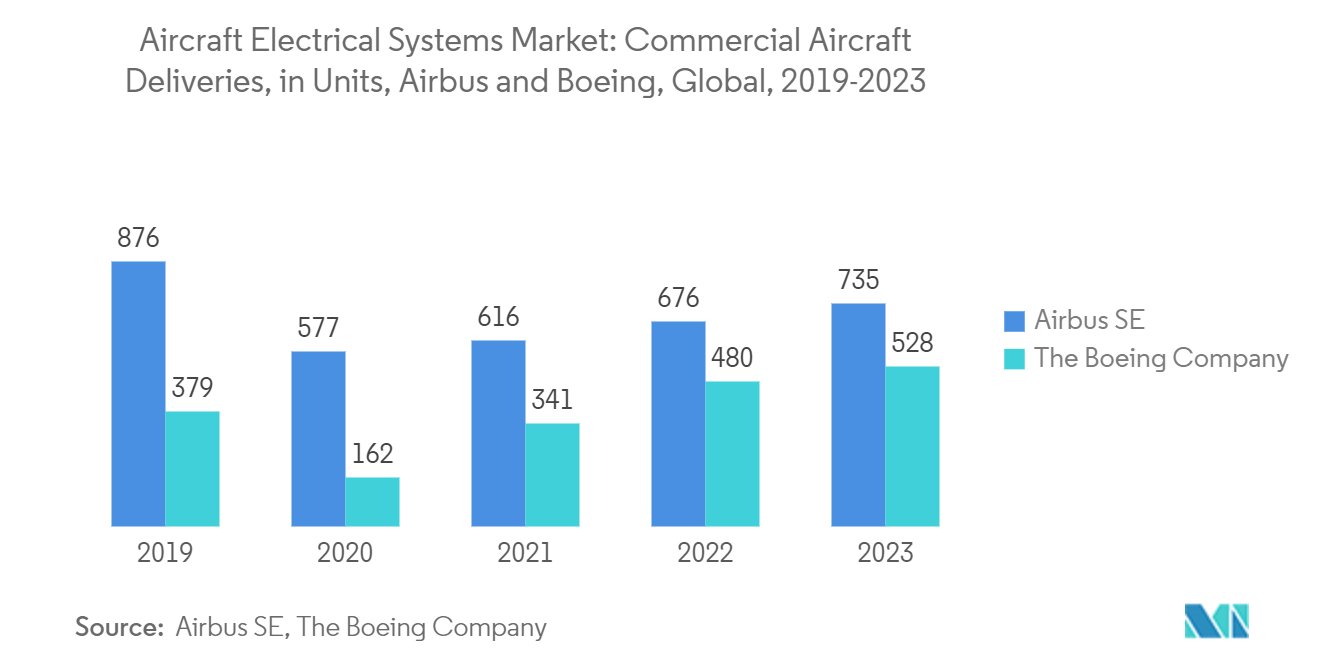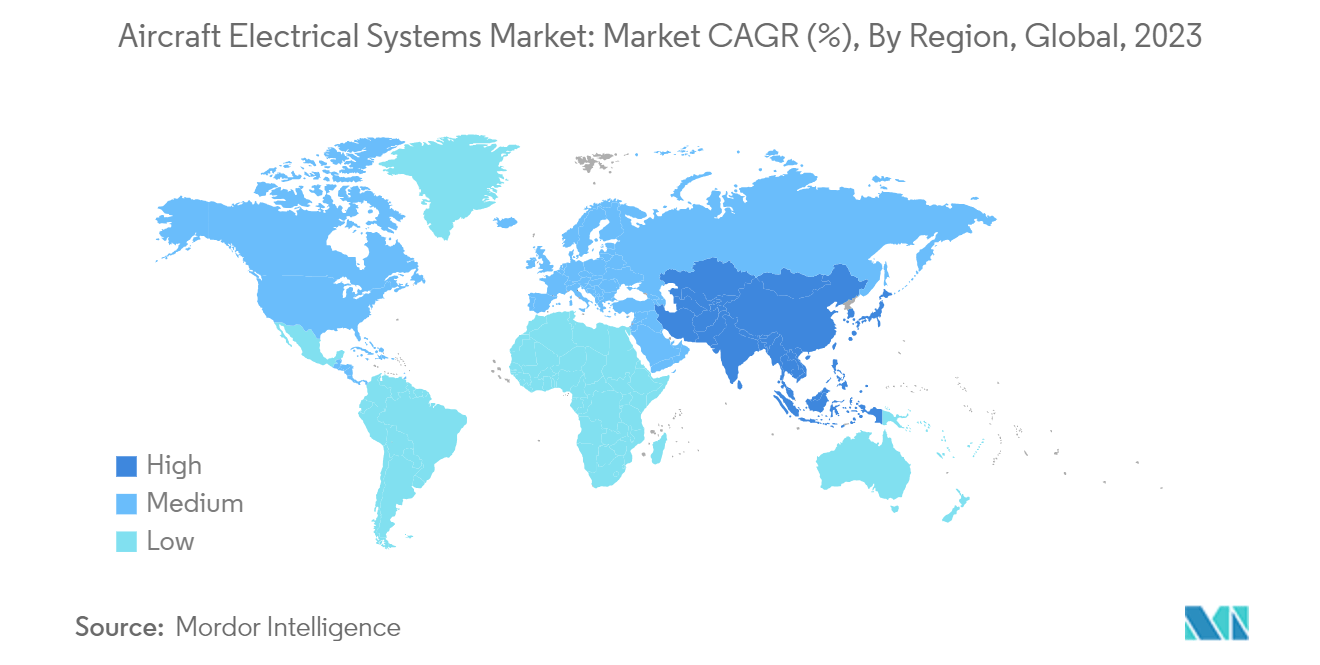Market Trends of Aircraft Electrical Systems Industry
The Commercial Aviation Segment is Expected to Exhibit Highest Growth During the Forecast Period
The commercial aviation segment is poised for significant growth, directly impacting the demand for aircraft electrical systems. Key drivers include a surge in aircraft deliveries, escalating air passenger numbers, and the integration of cutting-edge technologies in commercial aviation. IATA reported a 36.9% increase in global passenger kilometers in 2023 over 2022, with global air traffic rebounding to 94.1% of pre-pandemic levels. This surge in air travel is paralleled by a notable uptick in aircraft orders and deliveries, propelling the advancement of flight recorder devices. In 2023, Boeing and Airbus delivered 735 and 528 commercial jets, respectively, up from 676 and 480 in 2022.
A flurry of new aircraft orders is anticipated, further bolstering the demand for integrated systems, notably electrical systems. For instance, in July 2023, Indigo inked a substantial deal with Airbus for 500 A320neo aircraft deliveries between 2030 and 2035. Furthermore, the commercial aviation industry is increasingly exploring electric propulsion technology. These systems promise reduced greenhouse gas emissions and noise pollution compared to conventional jet engines. Electric motors, batteries, and advanced power management systems are being fine-tuned to support this shift in commercial aircraft propulsion
While fully electric aircraft are on the horizon, the industry is currently eyeing hybrid-electric systems as a transitional phase. In a notable move, Evfly contracted AutoFlight for 205 Prosperity I and Prosperity Cargo aircraft in March 2023. AutoFlight, in February 2023, achieved a milestone with its Gen4 eVTOL electric aircraft, completing a record-breaking 250 km flight on a single charge. The Gen4 aircraft boasts cutting-edge avionics, including third-party systems like Foreflight for independent distance verification. These advancements are set to underpin market demand in the coming years.

North America to Dominate Market Share During the Forecast Period
North America's market dominance is set to persist, buoyed by its robust aviation industry, the largest fleet of commercial and military aircraft in the United States, and a surge in aircraft modernization programs by airlines. The commercial aviation industry, having rebounded from the pandemic's impact, is poised for steady growth, with resuming aircraft orders and deliveries fueling demand for electrical systems. Notably, in 2023, key airports like Hartsfield–Jackson Atlanta and Dallas-Fort Worth collectively saw a 12% rise in traffic, hitting 475 million passengers, up from 425 million in 2022. This uptick in air travel had translated into increased aircraft orders and deliveries. For instance, by December 2023, The Boeing Company supplied 256 commercial aircraft to US airlines, marking a 5% increase from the previous year's 244 deliveries. Given that these aircraft heavily rely on diverse electrical systems, the market is expected to flourish.
Turning to the military segment, escalating defense budgets and a heightened procurement of new military aircraft are the primary market drivers. In January 2023, the US Air Force Life Cycle Management Center inked a USD 900 million, eight-year deal with five firms, focusing on wiring harnesses and kit assemblies for its F-16 combat jet fleet.
Moreover, the emergence of electric aircraft is set to reshape the market landscape, given their heightened reliance on electrical systems compared to traditional models. The United States is at the forefront of this shift, exemplified by the Air Force Materiel Command's successful test flight of its Alia electric aircraft in 2023. Noteworthy initiatives, like the Pentagon and US Air Force's Agility Prime, launched in 2020, underscore the nation's commitment to exploring electric aircraft's military applications and align with broader governmental efforts to curb carbon emissions. These advancements may position the US market favorably during the forecast period.


